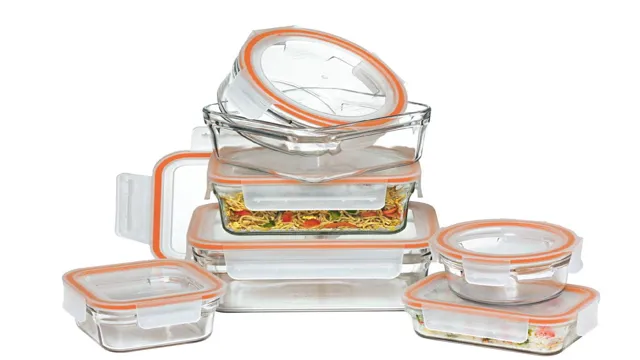If you’re a saltwater aquarium enthusiast, you know that maintaining the right water chemistry is crucial for the health of your tank inhabitants. One important aspect is calcium levels, which are critical for keeping corals and other invertebrates healthy. But how often should you be replacing your calcium replacement? The answer is not as straightforward as you might think.
Just like with any aspect of aquarium maintenance, the frequency of calcium replacement will depend on various factors unique to your tank. For example, how often you need to replace your calcium replacement will largely depend on the types of corals you have, their growth rate, and the intensity of lighting you use. Another important factor is the level of calcium in your water.
Regular testing can ensure that your levels stay within the right range (around 400-450 ppm) and can help you determine when additional calcium replacement is needed. Ultimately, the key is to be attentive and proactive in your tank maintenance. By staying on top of water testing and regular coral care, you can ensure that your calcium replacement schedule keeps up with the needs of your unique aquarium ecosystem.
What is Calcium Replacement and Why is it Needed?
Calcium replacement is a crucial aspect of maintaining a healthy saltwater aquarium. Calcium ions are essential for the growth and development of corals, and they can become depleted over time due to various factors, such as overuse by marine organisms, filtration processes, or changes in water chemistry. To replenish the calcium levels, aquarium owners can use specific additives that contain calcium carbonate or calcium hydroxide to supplement the water.
The frequency of adding calcium replacement depends on the size of the tank, the number of corals present, and the level of calcium depletion. Generally, it is recommended to test calcium levels regularly and adjust supplementation accordingly. Failure to replace calcium properly can lead to unhealthy coral growth, algae overgrowth, and ultimately the death of marine life in the aquarium.
Thus, it is essential to keep an eye on the calcium levels and replace them as needed to ensure a healthy and thriving saltwater aquarium.
Explanation of Calcium’s Role in Saltwater Aquariums
Calcium is a critical factor for maintaining the health and well-being of saltwater aquariums. But what exactly is calcium replacement, and why is it necessary for these aquatic environments? Simply put, calcium replacement refers to the process of replenishing the calcium levels in a saltwater aquarium that are naturally depleted over time. Calcium is essential for a variety of biological processes, including the formation and maintenance of coral reefs and the development of invertebrates such as crabs, shrimp, and snails.
Without sufficient levels of calcium, these delicate creatures can suffer from stunted growth, brittle exoskeletons, and overall poor health. Therefore, regular calcium replacement is necessary to ensure a thriving and healthy aquarium ecosystem. Whether you are a seasoned aquarium enthusiast or a newcomer to the hobby, understanding the importance of calcium replacement is key to maintaining a successful and beautiful saltwater aquarium.

Importance of Maintaining Proper Calcium Levels
Calcium replacement is a process of supplementing the body with additional amounts of calcium through diet or supplements, to maintain healthy levels of this vital mineral in the body. Calcium plays a crucial role in building healthy bones and teeth, promoting proper nerve and muscle function, and enabling blood to clot. Maintaining optimal calcium levels can help prevent bone density loss, osteoporosis, and other degenerative conditions.
However, many people fail to get enough calcium through their diet alone, and as they age, their ability to absorb calcium declines. This is where calcium replacement becomes necessary. Adequate daily intake of calcium can be achieved through calcium-rich foods such as dairy products, leafy greens, and fortified foods.
In some cases, calcium supplements are prescribed to meet the individual’s recommended daily intake. Remember, calcium is essential for good health, so make sure you’re getting enough of it!
Factors Affecting Calcium Depletion and Replacement Frequency
Calcium is an essential element in saltwater aquariums, and its proper levels must be maintained. However, excessive amounts of calcium can cause issues, leading to the question of how often to replace calcium replacement in saltwater aquariums. Several factors can affect the depletion of calcium levels, such as the type and number of corals, the alkalinity, and the pH level.
High levels of alkalinity can increase the rate of calcium depletion, causing a need for more frequent replacements. Conversely, low alkalinity and pH levels can slow down calcium depletion, leading to less frequent replacements. The number and type of corals present in the aquarium can also impact calcium levels. (See Also: How to Build a 300 Gallon Glass Aquarium: A Step-by-Step Guide)
Fast-growing corals require more calcium than slow-growing ones and, therefore, may need more frequent replacements. In conclusion, monitoring calcium levels and considering these factors can help determine the necessary frequency of calcium replacement in saltwater aquariums.
Calcium Depletion Rates in Different Types of Tanks
Calcium Depletion Rates The rate of calcium depletion in our aquariums and tanks can depend on various factors such as tank size, type of tank, types of corals, and the number of inhabitants. For instance, in small reef tanks, the calcium levels can drop rapidly due to the high metabolic activity of corals and invertebrates. On the other hand, in larger fish-only tanks, calcium depletion is much slower.
However, it’s important to note that the type of tank also plays a significant role in determining the calcium depletion rates. For example, in tanks with a lot of stony corals such as SPS (Small Polyp Stony) corals, the calcium levels can drop dramatically. In contrast, tanks that house soft corals and fish may not require frequent calcium supplementation.
Replacement frequency can also be affected by various factors such as water changes, feeding patterns, and dosing regimes. To avoid calcium depletion, it’s necessary to test the water regularly and adjust calcium supplementation accordingly. This will ensure that the corals remain healthy and vibrant.
Types of Coral and their Impact on Calcium Consumption
When it comes to coral consumption of calcium, the type of coral you have matters. Soft corals and hard corals both need calcium to grow, but hard corals require more compared to their soft counterparts. Hard corals have a more complex structure, including a limestone skeleton, which requires a steady supply of calcium to maintain its structural integrity.
On the other hand, soft corals have a more flexible structure, which does not require as much calcium. Understanding the types of corals in your tank is important when considering how much calcium you need to add to your aquarium to maintain a healthy environment. Another factor to consider is how much light is being provided to your corals.
Light plays a big role in the consumption of calcium by corals, as they use it in the process of photosynthesis. When corals are exposed to more light, their calcium demand increases as they grow and use the calcium to replace the lost calcium in their skeleton. Therefore, it is important to monitor calcium levels and replace it regularly to ensure the health of your corals in your aquarium.
Other Factors Affecting Calcium Levels and Depletion Rates
Calcium depletion Besides vitamin D deficiency, there are other factors that could affect calcium levels in the body and the speed of calcium depletion. One key factor is age; as we age, our bodies tend to absorb less calcium from the food we consume, leading to a greater risk of developing osteoporosis. Hormonal imbalances, especially in women during pregnancy or menopause, can also affect calcium levels and lead to bone loss.
Additionally, certain medications, such as corticosteroids and antacids, can interfere with calcium absorption and contribute to depletion rates. Other lifestyle factors, like high caffeine or alcohol intake and smoking, can also negatively impact calcium levels. It’s essential to understand these factors and their potential impact on calcium levels to help prevent depletion and ensure adequate replacement frequency.
A balanced diet, including foods rich in calcium, such as dairy products, leafy greens, and seafood, can help mitigate the effects of these factors and maintain healthy calcium levels in the body.
How to Monitor and Test for Calcium Levels
One of the keys to maintaining a healthy saltwater aquarium is keeping the calcium levels in check. But how often should you replace the calcium replacement used in your aquarium? The answer largely depends on the size of your tank, the number and types of corals, and the frequency of water changes. In general, it is recommended to test your water’s calcium levels at least once a week. (See Also: How to Properly Recondition Used Aquariums & Accessories: A Step-by-Step Guide)
If your levels are consistently low, it may be time to replace your calcium carbonate media. It’s important to note that different types of calcium supplements can affect your water chemistry differently, so be sure to choose a supplement that works best for your individual tank. Overall, regular monitoring and testing of your aquarium’s calcium levels is crucial to ensuring the health and longevity of your coral and fish.
Importance of Regular Monitoring and Testing
Regular testing and monitoring of calcium levels are essential to maintain good health, as inadequate levels can lead to numerous serious health complications. Calcium plays an important role in bone and teeth development, nerve signaling, muscle function, and blood clotting. The most common way to test for calcium levels is through a blood test.
This test measures the amount of calcium present in the blood and allows doctors to determine whether additional calcium supplementation is needed. Maintaining adequate calcium levels can be achieved through a healthy diet that includes dairy products, leafy greens, and fortified cereals. It is essential to monitor your calcium levels regularly, as imbalances can occur due to various underlying medical conditions or lifestyle factors.
In conclusion, regular monitoring and testing of calcium levels can help prevent serious health complications, making it crucial to prioritize this aspect of your health.
Ways to Monitor and Test for Calcium Levels
Monitoring and testing for calcium levels is essential for maintaining good health. One simple way to monitor your calcium levels is through regular blood tests. Your doctor can order a blood test to check your calcium levels, which is a quick and easy process.
However, if you want to test your calcium levels at home, there are also test kits available that allow you to measure your calcium levels using a sample of your urine or saliva. These kits are affordable and easy to use, but it’s important to follow the instructions carefully to get accurate results. Keep in mind that calcium levels can also be affected by factors like diet, exercise, and medications, so it’s important to consult with a healthcare professional if you have any concerns about your calcium levels.
By monitoring and testing your calcium levels regularly, you can ensure that your body is getting the amount of calcium it needs to maintain healthy bones, teeth, and muscles.
Determining the Replacement Frequency
If you’re an avid saltwater aquarium hobbyist, then you already know that one of the most important aspects of maintaining a healthy tank is by regular calcium replacement. But how often should it be replaced? This is a question that many saltwater aquarium owners often ask, and the answer isn’t as straightforward as one might think. The frequency at which you should replace your calcium is largely dependent on the individual needs of your tank.
Some aquariums might require a higher frequency of calcium replacement due to the presence of several calcium-consuming invertebrates or higher alkalinity levels. Conversely, some tanks may require less frequent calcium replacement due to the presence of few calcium-consuming organisms or lower alkalinity levels. However, a general rule of thumb is to replace calcium every two to four weeks or as per the manufacturer’s recommendations.
Testing your calcium levels periodically is crucial in determining the optimal frequency for your tank’s calcium replacement. So, it’s a good idea to invest in a reliable testing kit and monitor your tank’s calcium levels frequently to ensure that you’re replacing your calcium at the right time.
Calculation of the Calcium Replacement Frequency
Calcium Replacement Frequency Calcium is crucial for the development and maintenance of strong bones and teeth. As we age, our bodies absorb less calcium, making it necessary to replace this vital mineral through dietary sources or supplements. Determining the frequency of calcium replacement is essential to maintaining optimal health and avoiding deficiencies.
The frequency of replacement depends on several factors, including age, gender, diet, and specific health conditions. For example, women require higher calcium replacement due to bone loss during menopause. Those with limited dairy intake may also require more frequent replacement. (See Also: How to Maintain a Small Aquarium in 5 Easy Steps for Optimal Health and Happiness)
A qualified healthcare provider can assess an individual’s calcium needs and provide personalized recommendations for replacement frequency. It is important to follow these guidelines to avoid over supplementing, as excessive calcium intake can lead to health complications like kidney stones and heart disease. By determining the appropriate calcium replacement frequency, individuals can maintain optimal health and reduce the risk of developing bone and teeth-related conditions.
Factors to Consider Before Setting Replacement Intervals
Determining the Replacement Frequency is a crucial aspect that should be considered when deciding on the replacement intervals for any product. It involves looking at various factors, such as the product’s lifespan, usage pattern, maintenance practices, and technology advancements before setting a replacement interval. Failing to consider these factors could lead to premature replacements or neglecting replacements that are long overdue.
For instance, if a product has a lifespan of 5 years, but it is frequently used, the replacement interval may need to be adjusted to account for its high usage frequency. On the other hand, neglecting replacements that are overdue may result in suboptimal product performance or even total failure, which could lead to safety concerns, financial loss, and increased downtime. Therefore, accurate determination of the replacement frequency is essential to optimize the product’s performance, minimize downtime and reduce the total cost of ownership.
Conclusion
In conclusion, the frequency with which you need to replace calcium in your saltwater aquarium will depend on a variety of factors including the size of your aquarium, the number and types of corals and other invertebrates you keep, and other water parameters. However, a general rule of thumb is to monitor your calcium levels regularly and replace as needed. Don’t let depleted calcium levels be the villain in your aquarium story, keep your calcium levels in check to ensure your marine friends live happily ever after!”
Summary of the Importance of Calcium Replacement and Monitoring
When it comes to calcium replacement and monitoring, there’s no denying the importance of getting it right. But how often should you replace calcium? Unfortunately, there’s no one-size-fits-all answer to this question. It depends on a variety of factors, including your age, gender, and overall health.
Generally, though, it’s recommended that adults consume 1000-1200mg of calcium per day, which should come from a combination of foods and supplements. If you’re not getting enough calcium from your diet, you may need to take supplements more frequently to ensure that you’re meeting your body’s needs. However, it’s important to note that taking too much calcium can also be harmful, so it’s crucial to work with your doctor to determine the right replacement frequency for your specific situation.
By doing so, you can help ensure that you’re maintaining healthy bones and overall health for years to come.
FAQs
1. How often should I replace calcium replacement in my saltwater aquarium? A: The frequency of replacing calcium replacement in a saltwater aquarium depends on the aquarium’s calcium levels. Generally, it’s recommended to test the calcium levels once a week and replace the supplement as necessary to maintain adequate calcium levels. 2. Is it necessary to use a calcium supplement in a saltwater aquarium? A: Yes, calcium is a vital element in a saltwater aquarium as it promotes the growth of corals, shelled creatures, and other marine life. Using a calcium supplement helps to maintain and balance the calcium levels in the aquarium. 3. What are the signs that my saltwater aquarium needs more calcium? A: The most common signs of a calcium deficiency in a saltwater aquarium include reduced coral growth, a decrease in the overall health of marine life, and the appearance of algae growth on the aquarium’s walls. 4. Can I use different types of calcium supplements in my saltwater aquarium? A: Yes, there are various types of calcium supplements available, including calcium carbonate, calcium chloride, and calcium hydroxide. However, it’s essential to choose the specific calcium supplement that’s appropriate for your aquarium’s specific needs. 5. What is the ideal calcium level in a saltwater aquarium? A: The ideal calcium level in a saltwater aquarium should be between 380-450 ppm (parts per million). 6. What happens if the calcium levels in my saltwater aquarium are too high? A: High calcium levels in a saltwater aquarium can lead to the precipitation of calcium carbonate, which can cause the buildup of calcium deposits on the aquarium’s walls and equipment. This can also lead to pH imbalances, affecting the overall health of the aquarium. 7. Can I overdose on calcium supplements in my saltwater aquarium? A: Yes, overdosing on calcium supplements can be harmful to both the marine life and the aquarium’s overall health. It’s essential to follow the recommended dosage instructions and test calcium levels regularly to avoid over-supplementation.







